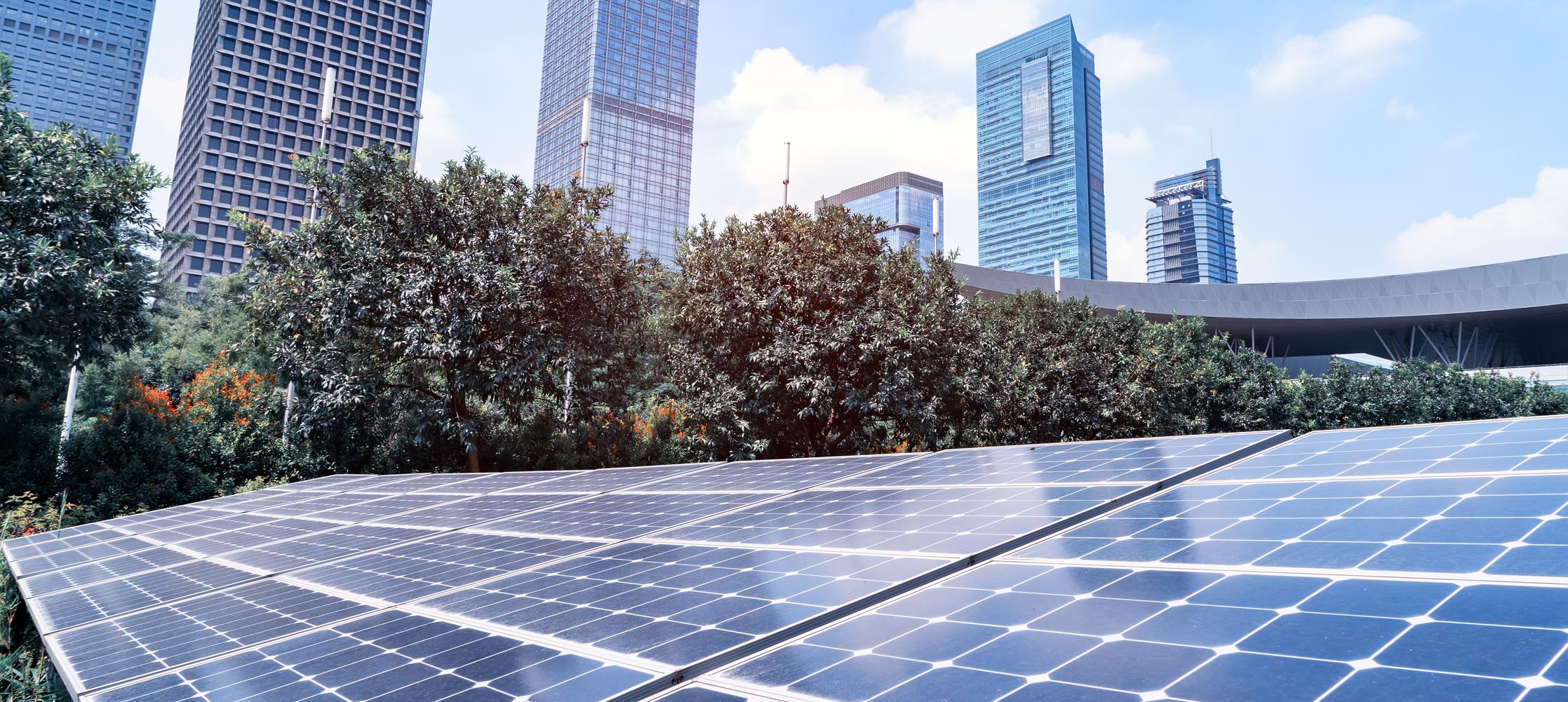-
https://climateinstitute.bmo.com/static/images/clock-icon.svg
5 Minute Read
-
Listen
-
Stop
-
Text Bigger | Smaller
Climate change is altering weather patterns in significant and meaningful ways. If these weather events continue to grow in frequency and intensity, they will pose genuine risks to U.S. REITs – and real estate investors. BMO Capital Markets’ latest report US Real Estate: It’s Getting Hot in Here...So Let’s Analyze Climate Change Risk on U.S. REITs presents a first-of-its-kind analysis on the financial implications of climate change on the U.S. REIT industry. This was a collaborative effort that was conducted in partnership with the BMO Climate Institute, BMO's Enterprise Data Science and AI (DnA) team, and Climate Engine.
Listen to the Sustainability Leaders episode below from a recent BMO IN Tune Podcast, where host Camilla Sutton is joined by Doug Morrow and Juan Sanabria to discuss the key findings from their report around climate change impacts on US real estate companies.
Subscribe to listen to other IN Tune episodes
BMO Equity Research Podcast disclosure
Sustainability Leaders podcast is live on all major channels including Apple, Google and Spotify
The following is a conversation, edited for length, between Juan Sanabria, U.S. Real Estate Analyst at BMO Capital Markets, Doug Morrow, BMO Capital Markets’ Director of ESG Strategy and George Sutherland, BMO Climate Institute Advisor Climate Change & Sustainability on the risks climate change poses to U.S. Commercial REITs.
Briefly, tell us about this report and what makes this work unique.
Doug Morrow: This is the first time we’ve done a dedicated analysis of physical climate risk. We’ve published on climate change before, but this was the first deep dive on the physical impact side of things. There was a lot of collaboration that went into this note, working with the BMO Climate Institute, the data analytics team from BMO, as well as the third-party Climate Engine, which makes it really unique.
Juan Sanabria: Having covered U.S. REITs for nearly 20 years, I can say that climate change is definitely becoming a bigger issue that’s coming up on more earnings calls in terms of climate risk and hazards. Whether it’s wind, fire or flooding, we’ve seen a meaningful step up in insurance costs for REITs. And investors seem to think the cost associated with environmental hazards is just part of doing business. It’s also raising questions about whether management teams should be backing out hurricane costs or fire costs, one-time events that no longer seem to be one-time in nature. It’s just part of the new normal we’re living in today, unfortunately.
George Sutherland: From the climate science perspective, what makes this work unique is the quality of the data sets that are foundational to this analysis. Sometimes, data can’t differentiate risk between properties or they may have spatial gaps. This work leverages some of the highest resolution flood data sets as well as others for wildfires and storms that are available, which allows the analysis to differentiate risks between neighbouring properties. And it does so with wall-to-wall coverage for the contiguous United States without any gaps in the data. It gives us the ability to really quantify where there’s potentially unpriced risk in some of these assets. It bridges climate science with finance data at a continental scale.
This is the first time BMO has completed a dedicated analysis of physical climate risks. What were some of the surprising outcomes of your research?
Morrow: The biggest surprise was just the precision of the model and how it really drilled down to the level of not just ZIP codes, but even neighbourhoods within ZIP codes in terms of specificity. The other thing that surprised me was some of the differences we found between flood risk according to our modelling courtesy of the BMO Climate Institute and Climate Engine and some of the numbers in FEMA maps that some REITs use in their climate reporting. We found some significant differences, some pretty significant deltas in some cases, which raises questions about model accuracy. In terms of the percentage of the portfolio, for example, in a 100-year flood zone, sometimes the gap was in excess of 10%.
Sanabria: The sophistication of the tools we used allowed for a differentiation in the risk around a particular city or within a particular MSA or metropolitan statistical area. For instance, we found that certain areas of Los Angeles are less likely to have fire risk than others. And at first, we were like, this data doesn’t make any sense because they’re all in L.A. They should be similar. But within individual neighbourhoods, the risks vary.
Describe the financial risks climate change could have on U.S. commercial REITs.
Morrow: One of the things that hit home is the increase that we’re seeing in insurance costs is significant. Although it’s a mistake to only look at this through the lens of insurance premiums because there’s also a whole host of other effects in terms of potential foregone revenue, there are higher energy expenses, interruptions in grid-derived electricity, and reputational considerations in terms of REITs that may not be keeping up with their peers in terms of adaptation. This is something that many investors are taking more seriously.
Since the risks of climate change are geographical, what regions or locations face higher risks?
Sanabria: There are several maps in the report where you could see where companies are at greater risk. Regions like the southeast are more at risk than the rest of the country because you’re on the coast and more prone to coastal flooding. The Northeast has had some storms recently if you think of New York and Hurricane Sandy in 2012, but they screen as lower risks than Florida or Houston. California also has wind and rain or fire risk, but it clearly has a greater risk of fire vs other areas of the country.
What are some of the factors investors need to think about when exploring an investment opportunity in a U.S. Commercial REIT?
Sanabria: U.S. REITs are differentiated from a typical consumer because they can get corporate-level insurance policies. But we’ve seen insurance companies go bust in Florida and just the accessibility of insurance has gone way down because it’s unprofitable for those companies to continue to pony up for losses that are seemingly annual occurrences.
Sutherland: In residential markets, we’re starting to see that some properties are just completely uninsurable. If such a trend also occurs in the commercial sector, that risk is obviously passed from insurers to the property owners.
Morrow: Another part of the equation is that not all buildings are equal when it comes to adaptation or preparedness to deal with climate change impacts. For any investor with a reasonably mid to long-term holding period, I think the onus is really on them to do their due diligence in terms of, how aware is the management team about climate change risk? What steps are they taking to mitigate the exposure of the portfolio to these risks? How transparent are their disclosures? I think all investors with any reasonable holding period should be asking these questions.
Your work is as much about evaluating opportunities as it is about assessing risk. How do the risks and opportunities break down by sub-sector?
Sanabria: We rank all the REITs across the board and within the sub-sectors. Manufactured housing is the most at-risk sub-sector. It’s a small sub-sector, there are only two companies, but they tend to own retirement properties around the coast where people want to retire to and therefore given the locations of their properties, tend to be more at risk. Office companies and data centers are the lowest-risk sub-sectors.
Morrow: Investors can’t get away from these risks by concentrating on a particular vertical within the REIT industry. Even among the lower-risk sub-sectors, such as data centers and offices, the risks are still there.
Are REITs taking this seriously?
Sanabria: I definitely think so. Companies largely recognize the risks and try to invest in ESG initiatives, and disclosure around that will improve over time. But to a certain degree, location is still the most important thing in real estate and it's hard to totally get rid of the risks of certain properties based on where they are. I think it is clearly getting more attention at the board level. A lot of these ESG committees are now reporting to the board.
What are the implications of your findings on investors and how they value REIT assets?
Sanabria: A large part of the investment community is very short-term in nature. There’s always going to be an immediate focus on the topic du jour, whether it’s the war in Ukraine, inflation, higher interest rates, but that doesn’t change the fact that this climate change risk is here and it’s not going away. It’s a long-term question that needs to be addressed to what effects and to what extent it changes people’s risk premium around certain companies and or to have growth prospects, whether that be lost revenue or higher costs.
Can you tell us a little more about the Climate Institute’s Spatial Analytics tool and what it means for BMO’s customers?
Sutherland: In partnership with BMO’s Data & Analytics team and Climate Engine, we’ve established—and continue to grow—industry leading capabilities that are able to quantify location-specific presence of climate hazards, such as flood, wildfire, storms, drought, and more, for climatic conditions today and into the future along multiple warming scenarios. We’re applying decision-useful outputs from these tools to inform product development and to support our clients in their identification and management of climate change risk and opportunity. The Climate Institute is also working to enable our workforce, our frontline staff, our research staff, executives, everyone, to have this sort of information on climate change at their fingertips to integrate it into our daily business, our client support.
What’s your message to REITs?
Sanabria: You're marketing the company, your strategy, and your management team. If you are upfront about the risks that are out there and can put forward a compelling strategy about your approach, you'll have a better cost of capital that will allow you to grow and offer better returns to shareholders over time. There are clearly incentives for companies to buy into this as the world realizes the risks and adapts. It's something investors are demanding from companies. The investor base forces you to buy into it and highlight your strategy. I think this is all part of how the world is evolving and moving forward. There is an opportunity for companies to really be thoughtful about this and address the reality of where we are.
Featured Publications

“It was a great privilege to be at COP28 representing BMO and helping advance the matter on c…

Corporate climate action appears to be reaching a new phase. More companies in the United States an…

BMO Arranges Green Financing to Fund New Lawson Centre for Sustainability, Trinity College's Mo…





